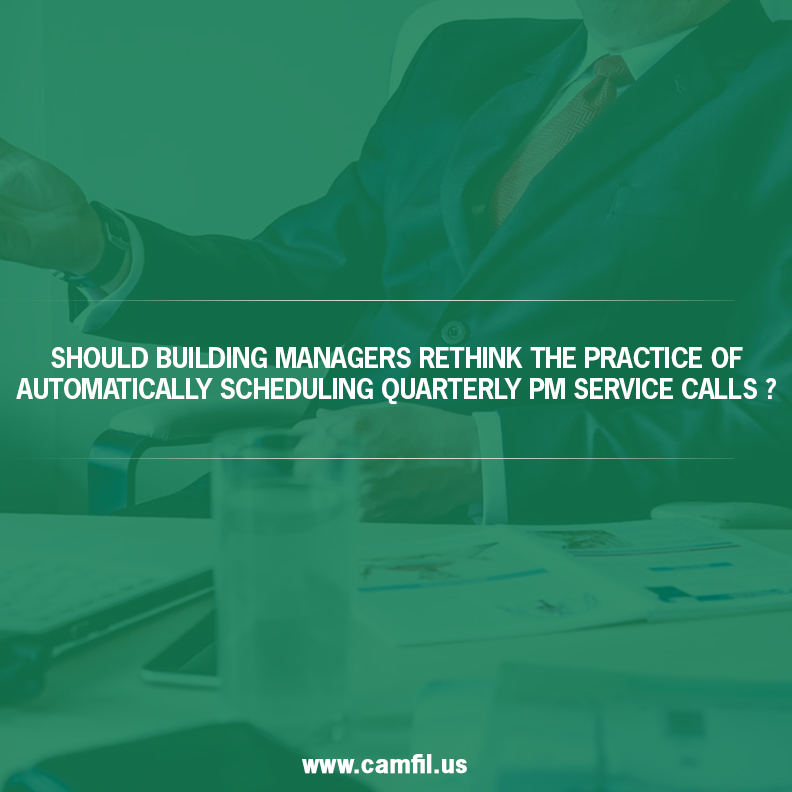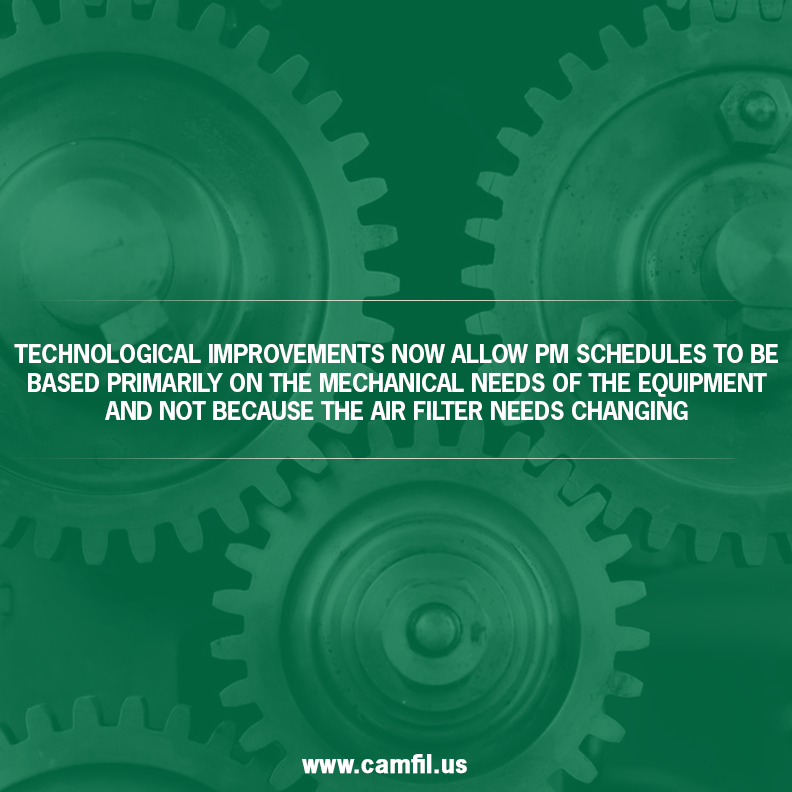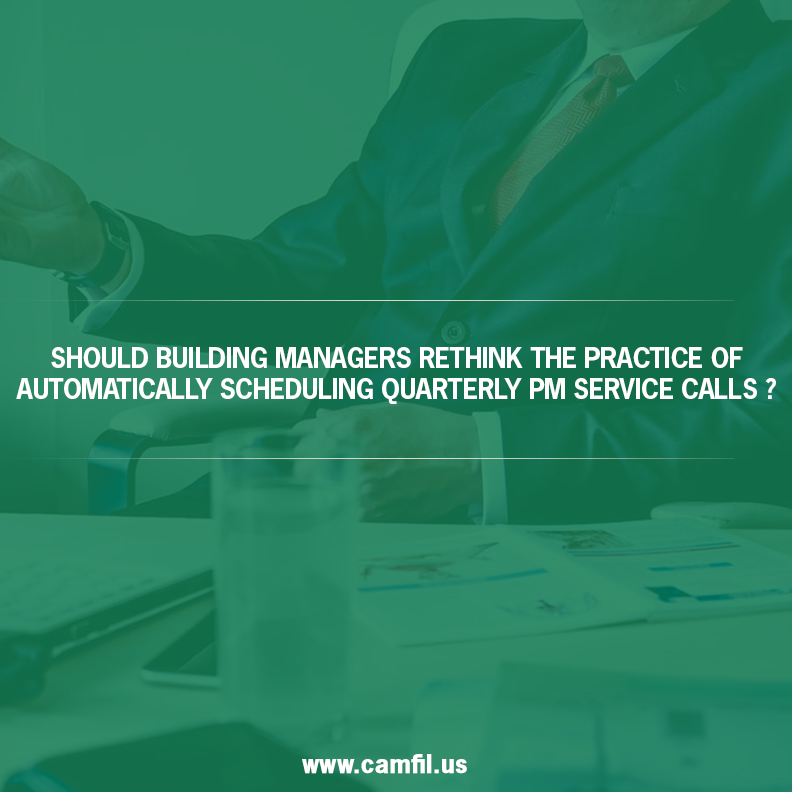Clean Air Solution by Camfil USA. Leader in Air Filters for Commercial and Industrial applications.
Base PM schedule on equipment needs, not air filter changes.
Ask drivers how often they should change oil in their cars and you’ll likely hear an answer that’s been repeated for generations: ‘three months or every 3,000 miles, whichever comes first.’ The performance of older automobile engines and the low quality of motor oil demanded a short interval be followed to avoid expensive repairs. However, that may no longer be valid as improvements to automotive engines and advancement in oil chemistry has changed the paradigm; saving many companies significant internal or external labor hours and cost.
While car manufacturers are extending maintenance intervals up to 10,000 miles in some cases, that message has not yet reached everyone. Quick in-and-out oil change shops with guilt inducing windshield stickers, are doing their best to insure the 3,000 mile/ three-month oil change remains firmly in place, for obvious reasons.
Oil change intervals are not the only maintenance cycle under challenged due to advanced technology. Recent improvements to HVAC equipment, building automation systems and air filter technology have progressed to the point where the question should be asked: Is it also time to rethink the industry standard of quarterly PM service calls on your HVAC equipment?
Let’s look at just a few recent technical innovations on three key components of HVAC systems and how they give you flexibility when determining the optimum interval between PM calls.
1. Like most mechanical systems, HVAC equipment has benefited from the improved reliability of raw materials in the supply chain. Stress fractures from the vibration of moving parts for example, is less of an issue as the consistency of metals and other materials used for structural supports have become more reliable. Belts, which in the past required regular inspections, now routinely run a minimum of one year between adjustments.
If we look inside at the heart of an HVAC systems, new variable speed compressor technology reduces wear and tear by matching the compressor’s operational speed to the demand load. This also reduces repeated startups from a dead stop which is not only hard on equipment, but requires significant energy.
If the compressor is the heart of the system, coils are the veins and arteries. Micro-channel coil technology, borrowed from the automotive industry, utilizes aluminum tubes as opposed to fins. These tubes are much sturdier with a higher resistance to corrosion. The manufacturing technique used to produce these coils has fewer critical inherent failure points which further improves reliability.
2. A maintenance office in today’s world may resemble an air traffic control tower due to the expanded use of building automation systems. It was not all that long ago, the ability to continuously monitor and adjust the performance of your HVAC equipment from a single computer terminal was limited to Fortune 500 companies with deep pockets. That is no longer the case as the widespread use of this technology has brought its benefits within nearly everyone’s budget.
These systems give the user the ability to monitor the current condition of multiple units with the same level of confidence as a visual inspection. As software continuously improves, diagnostic functions and even equipment failure predictions, will allow managers to avoid running equipment to failure between pre-scheduled maintenance calls.

3. The air filter is the final piece of the puzzle. More than the other two components, the service life of the pleated air filter has historically been the primary driver when developing a PM schedule. In the past, air filters would need replacing every three months. The lack of technical innovation to improve service life by air filter manufacturers coupled with service contractors who built their business models on four changes per year, left the industry with their version of the “3000 mile oil change.”
However, according to Camfil USA’s Food and Beverage Segment Manager, Mark Davidson; “While today’s pleated air filters may look the same as they used to, the similarity ends there. Today, you can find structurally strong, water-resistant pleated filters produced from multiple fiber densities with higher MERV ratings. It may be a surprise to learn, but 12-month service life guarantees are now available”
“Be an active participant when selecting air filters that protect your people and your products. Everyone in the supply chain doesn’t have the same motives so it’s up to user to request test reports or modeling software projections. After purchase and installation, validate those lab reports with actual field testing to confirm performance.”
“Also, demand those service life guarantees,” says Davidson, “and take advantage of those filters capable of delivering higher performance. PM schedules can now be developed after removing the service life of the air filter from the equation. In other words, create PM schedules based solely upon the needs and performance of equipment; not because an air filter needs to be changed.”
Based on the advancement in equipment performance, building controls and air filter technology, should building managers rethink the practice of automatically scheduling quarterly PM service calls? It may be hard to say yes to that question, but remember that improvements in the auto industry challenged something as deep-seated as the 3000-mile oil change, and we are all the better for it. Overall cost to the consumer is down, performance is up and we are disposing of far less waste oil.
In the HVAC world, it seems technological improvements now allow PM schedules to be based primarily on the mechanical needs of the equipment and not because the air filters need changing. System performance is improved, overall cost down and far fewer dirty filters shipped to landfills.
CONCLUSION:
For more than 50 years, Camfil has sold value added energy and labor saving air filtration products to commercial facilities.
Camfil air filters remove not only dust, but fine particles down to the sub-micron level.
Instead of just improving the air quality, air filters can also save money through a reduction in energy costs. Without effective air filtration systems, indoor pollutants can cause a variety of health problems.

Clean air is a human right because it is essential for life.
Camfil is focused on creating a better future. Camfil air filtration products today are delivering unmatched results, in terms of both filtration and energy efficiency, but there is still much work to be done.
Lynne Laake
T: 888.599.6620,
E: Lynne.Laake@camfil.com
F: Friend Camfil USA on Facebook
T: Follow Camfil USA on Twitter
Y: Watch Camfil Videos on YouTube
SOURCE Camfil.us
The post Should You Extend the Time Between PM Service Calls? appeared first on Air Filters for Clean Air.

